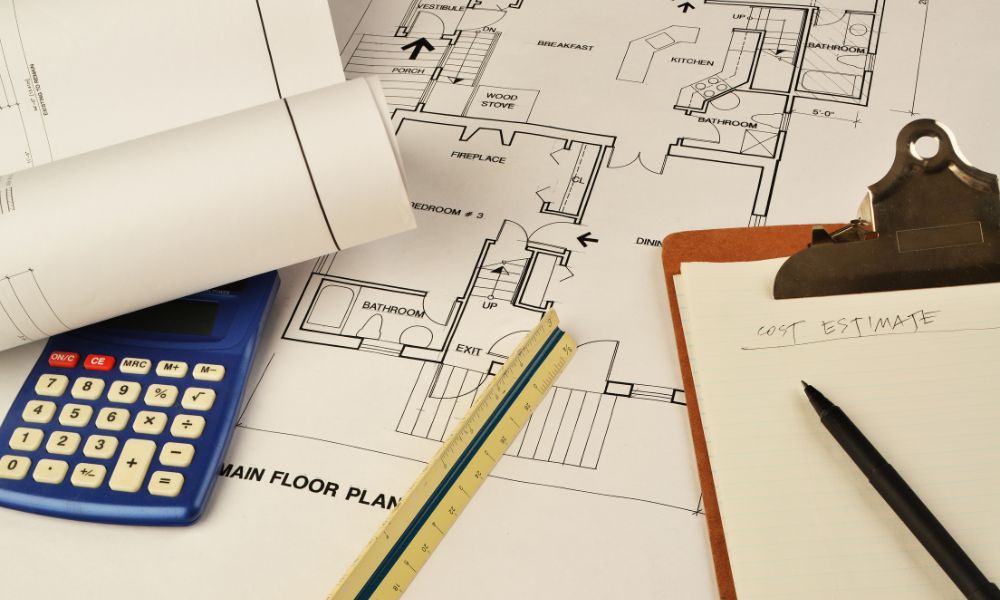In today’s competitive construction industry, general contractors face increasing pressure to deliver projects on time and within budget. The complexity of modern projects—whether residential, commercial, or civil—means that traditional methods of estimating costs no longer suffice. This is where cost estimating software becomes a game-changer.
By using dedicated construction estimating software, general contractors can achieve greater accuracy, efficiency, and project management success.
This guide will explore why every general contractor should adopt cost estimating software, the benefits it offers, and the best tools available today.
The Changing Landscape of Construction Estimating
Historically, general contractors relied on manual calculations and spreadsheets to estimate the cost of construction projects. While this method has been standard practice for decades, it is prone to human error, inefficiencies, and limitations in terms of scalability. Inaccurate estimates can lead to budget overruns, delays, and strained relationships with clients.
As projects have grown more complex, the need for precise, real-time data has become paramount. The rise of digital tools in construction has given contractors a competitive edge, helping them streamline operations and deliver more accurate estimates.
What is Cost Estimating Software?
Cost estimating software is a digital tool that helps general contractors forecast the cost of labor, materials, equipment, and overhead for construction projects. These programs allow contractors to input data such as project blueprints, material quantities, labor costs, and other variables to calculate a detailed estimate. Many platforms also offer integration with project management, accounting, and bidding software.
By automating the estimation process, contractors can minimize errors, reduce the time spent on manual calculations, and produce more reliable cost forecasts. Most estimating software solutions are cloud-based, meaning data can be accessed from anywhere, promoting collaboration and transparency between teams.
Key Features of Cost Estimating Software:
- Quantity takeoff capabilities for material measurement.
- Pre-built templates for various construction projects.
- Real-time collaboration and access from multiple devices.
- Detailed reporting and cost breakdowns.
- Integration with accounting and bidding platforms.

Benefits of Cost Estimating Software for General Contractors
The advantages of using cost estimating software go beyond just calculating numbers. Let’s dive into the key benefits general contractors experience by adopting these tools:
Improved Accuracy and Precision
One of the main reasons why general contractors should switch to cost estimating software is the ability to improve accuracy. Manual methods often rely on approximations and can be influenced by human error, leading to over- or under-estimating project costs.
Estimating software takes the guesswork out of the equation by using precise algorithms to analyze data, eliminating errors that could have significant financial consequences. Most tools also allow contractors to update real-time data from suppliers, ensuring that the latest material prices and labor rates are reflected in the estimate.
How Improved Accuracy Benefits General Contractors:
- Minimizes the risk of budget overruns.
- Reduces the likelihood of disputes with clients over costs.
- Builds trust by providing transparent, reliable estimates.
Faster Turnaround Time for Estimates
In a competitive industry, speed matters. General contractors who can deliver estimates quickly are more likely to win bids. Manual estimating is time-consuming, requiring days or even weeks to complete, especially for large or complex projects.
Cost estimating software accelerates this process by automating much of the work. With pre-built templates, stored data, and real-time updates, contractors can generate estimates in hours rather than days. This increased speed not only improves productivity but also allows contractors to take on more projects.
Why Faster Estimates Matter:
- Improves efficiency, allowing contractors to bid on more projects.
- Increases the likelihood of securing contracts by responding quickly.
- Frees up time for other essential tasks, such as project planning and client communication.
Enhanced Collaboration and Communication
Construction projects involve multiple stakeholders, from architects and engineers to subcontractors and suppliers. Effective communication and collaboration are crucial for ensuring that everyone is aligned and working toward the same goals.
Most cost estimating software is cloud-based, allowing all parties to access the same data and work collaboratively in real time. This means that estimators, project managers, and accountants can easily share information and make updates, keeping everyone in the loop and reducing the risk of miscommunication.
How Cloud-Based Tools Improve Collaboration:
- Streamlines the sharing of project data across teams.
- Provides real-time updates on project costs and changes.
- Increases transparency and accountability among all stakeholders.
More Competitive Bids
The construction industry is highly competitive, and general contractors need to stand out when bidding for new projects. Cost estimating software gives contractors an edge by providing detailed, professional-looking estimates that include every line item and cost breakdown.
This transparency can build confidence with potential clients, showing them that the contractor has a thorough understanding of the project requirements and costs. In addition, software allows contractors to fine-tune bids to ensure they are competitive without sacrificing profit margins.
How Estimating Software Enhances Bidding:
- Produces polished, detailed bids that build client trust.
- Ensures estimates are competitive while protecting profitability.
- Enables contractors to respond faster, increasing the chances of winning projects.
Better Risk Management and Contingency Planning
Construction projects are often fraught with unforeseen challenges—unexpected delays, price fluctuations, or scope changes. These variables can throw off even the best-laid plans. Cost estimating software allows contractors to build contingencies into their estimates, ensuring that potential risks are accounted for in the budgeting process.
By anticipating and planning for unexpected costs, general contractors can avoid budget blowouts and maintain greater control over the project’s financials. This foresight minimizes the impact of disruptions and helps keep the project on track.
Why Risk Management Matters:
- Prevents costly budget overruns.
- Ensures that clients and contractors are prepared for potential challenges.
- Increases project success rates by anticipating and planning for risks.

Top Cost Estimating Software for General Contractors
There are many cost estimating software options available on the market, each offering different features and benefits. Here are some of the top tools general contractors should consider:
Bluebeam Revu
Bluebeam Revu is a powerful tool widely used in the construction industry for its digital takeoff capabilities. It allows contractors to mark up project plans, measure quantities, and generate accurate cost estimates. Bluebeam integrates seamlessly with other project management and bidding tools, making it a popular choice for general contractors.
ProEst
ProEst is a cloud-based solution that offers robust estimating, takeoff, and bid management features. Its user-friendly interface makes it easy to input data, collaborate with teams, and produce detailed cost breakdowns. ProEst also integrates with project management platforms, allowing for seamless collaboration.
Kubla
Kubla specializes in earthworks and civil projects, providing accurate calculations for cut-and-fill quantities. Its advanced features make it ideal for general contractors who focus on infrastructure or large-scale civil construction projects.
Microsoft Excel
While not a dedicated estimating software, Excel remains a reliable tool for many general contractors. Excel’s flexibility and customizability allow contractors to create personalized estimating templates and perform manual calculations. However, it lacks the automation and collaborative features of specialized software.
How to Choose the Right Estimating Software for Your Business
When selecting cost estimating software, general contractors should consider several factors, including the size and scope of their projects, budget, and team needs. Key factors to consider include:
- Ease of Use: Look for software with an intuitive interface and a minimal learning curve.
- Integration Capabilities: Ensure the software integrates with your existing tools, such as project management, accounting, or bidding platforms.
- Cost: Consider whether a one-time purchase or subscription-based software is more suitable for your budget.
- Customization: Choose software that allows you to customize templates and reports to match your business needs.
Why General Contractors Need Cost Estimating Software
Cost estimating software is no longer a luxury for general contractors—it’s a necessity. The speed, accuracy, and efficiency that these tools provide are crucial for winning bids, managing projects, and staying ahead in a competitive industry.
By adopting cost estimating software, contractors can improve collaboration, reduce errors, and ensure financial success for their projects.
If you’re ready to boost your estimating capabilities and streamline your construction processes, contact Measure Manage today for expert advice on selecting and implementing the best estimating tools for your business.




